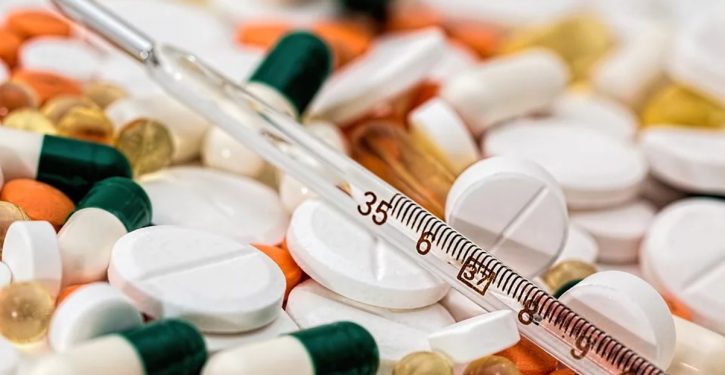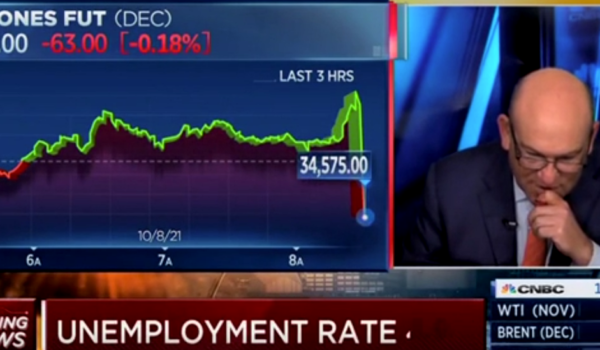
“Scientists have discovered an entirely new class of antibiotic that appears to kill one of three bacteria considered to pose the greatest threat to human health because of their extensive drug-resistance,” reports The Guardian:
Zosurabalpin defeated highly drug-resistant strains of Carbapenem-resistant Acinetobacter baumannii (Crab) in mouse models of pneumonia and sepsis, and was being tested in human trials. Crab is classified as a priority 1 critical pathogen by the World Health Organization, alongside two other drug-resistant forms of bacteria – Pseudomonas aeruginosa and Enterobacteriaceae.
“Crab is a significant cause of infection in hospitals, particularly in people who are on ventilators,” said Dr Andrew Edwards…“While it is not an aggressive pathogen it is resistant to multiple different antibiotics, making it very difficult to treat. Unfortunately, development of new treatments against this bacterium has been extremely challenging because it is very adept at keeping antibiotics from getting past its outer cell layer. Therefore, this work is really exciting, and provides confidence that the approaches being used to find new antibiotics can bear fruit.”
Antibiotic-resistant infections pose an urgent threat to human health – particularly those caused by a large group of bacteria known as Gram-negative bacteria, which are protected by an outer shell containing a substance called lipopolysaccharide (LPS).
“LPS allows bacteria to live in harsh environments, and it also allows them to evade attack by our immune system,” said Dr Michael Lobritz, the global head of infectious diseases at Roche Pharma Research and Early Development in Basel Switzerland, which developed the new drug….a series of experiments published in Nature … showed that the drug prevented LPS from being transported to the outer membrane of the bacterium, killing it…Zosurabalpin considerably reduced levels of bacteria in mice with Crab-induced pneumonia and prevented the death of those with Crab-related sepsis….
But it may be many years before this antibiotic is available in the United States. The Food and Drug Administration can take many years to approve life-saving drugs and medical devices.
Jake Selliger describes how he is “dying of squamous cell carcinoma, and the treatments that might save [him] are just out of reach,” due to the FDA, which routinely takes many years to approve life-saving medical treatments.
“The FDA is responsible for more deaths on an annual basis than any other government agency. Here’s one of its victims,” noted Paul Matzko of the Cato Institute. Researchers are “curing multiple cancers right now,” yet “the FDA is acting like it’s business as usual” and dragging its feet on approving cures. Selliger’s demise shows how the “FDA is much more” harmful “than your political opponents you think you hate,” argues Richard Hanania of the University of Texas.
Here is one story of how the FDA needlessly delays the approval of lifesaving drugs, from “Why the FDA Has an Incentive to Delay the Introduction of New Drugs:”
“In the early 1980s, when I headed the team at the FDA that was reviewing the NDA for recombinant human insulin, . . . we were ready to recommend approval a mere four months after the application was submitted (at a time when the average time for NDA review was more than two and a half years). With quintessential bureaucratic reasoning, my supervisor refused to sign off on the approval—even though he agreed that the data provided compelling evidence of the drug’s safety and effectiveness. ‘If anything goes wrong,’ he argued, ‘think how bad it will look that we approved the drug so quickly.’”
FDA employees commonly take years to approve life-saving drugs. That results in the deaths of hundreds of thousands of people who could have been saved by earlier approval of those drugs. For example, at least a hundred thousand people died waiting for the FDA to approve beta blockers. One of the FDA officials involved in delaying their approval was John Nestor. Nestor was notorious for following rules in ways designed to frustrate and inconvenience other people. As the Journal of American Physicians and Surgeons notes:
Nestor had the unique habit of getting into the leftmost lane [on the highway] with his cruise control set at 55 mph, the posted speed limit. He would drive at this speed regardless of what came up behind him. Cars would zoom up close to his rear bumper; drivers would flash their lights and blast their horns,some swerving around him on the right while giving him the finger—none of this fazed Nestor in the least. As he explained it, 55 mph was the law, and he had a right to drive in whichever lane he chose: “Why should I inconvenience myself for someone who wants to speed?”
Nestor followed this rigid mindset in his work at the FDA. He was very good at using agency red tape, and minor risks or side effects of drugs, as an excuse to avoid approving life-saving drugs.
The FDA didn’t approve a home test for HIV until 24 years after it first received an application. According to an FDA advisory committee, the test “holds the potential to prevent the transmission of more than 4,000 new HIV infections in its first year of use alone.” That means thousands of people likely got infected with AIDS as a result of the delay in approving it. As Roger Parloff of Fortune notes, the FDA’s delay in approving the home HIV test is a “scandal.” It likely caused the deaths of thousands of people, given the mortality rate from AIDS. It may also have caused billions of dollars in additional costs for taxpayers, given that AIDS is a costly and debilitating disease to treat, resulting in treatment costs of perhaps $600,000 per AIDS sufferer.
The FDA keeps the most effective sunscreens off the U.S. market. The FDA blocks new innovations that will protect your skin. Insider reports that the
US has awful sunscreen compared to Asia and Europe. Strict, decades-old FDA rules are to blame:
-
- European and Asian sunscreens boast stronger and smoother formulas than sunscreens found in the US.
- That’s because the FDA is slower to approve new UV filters compared to other countries.



